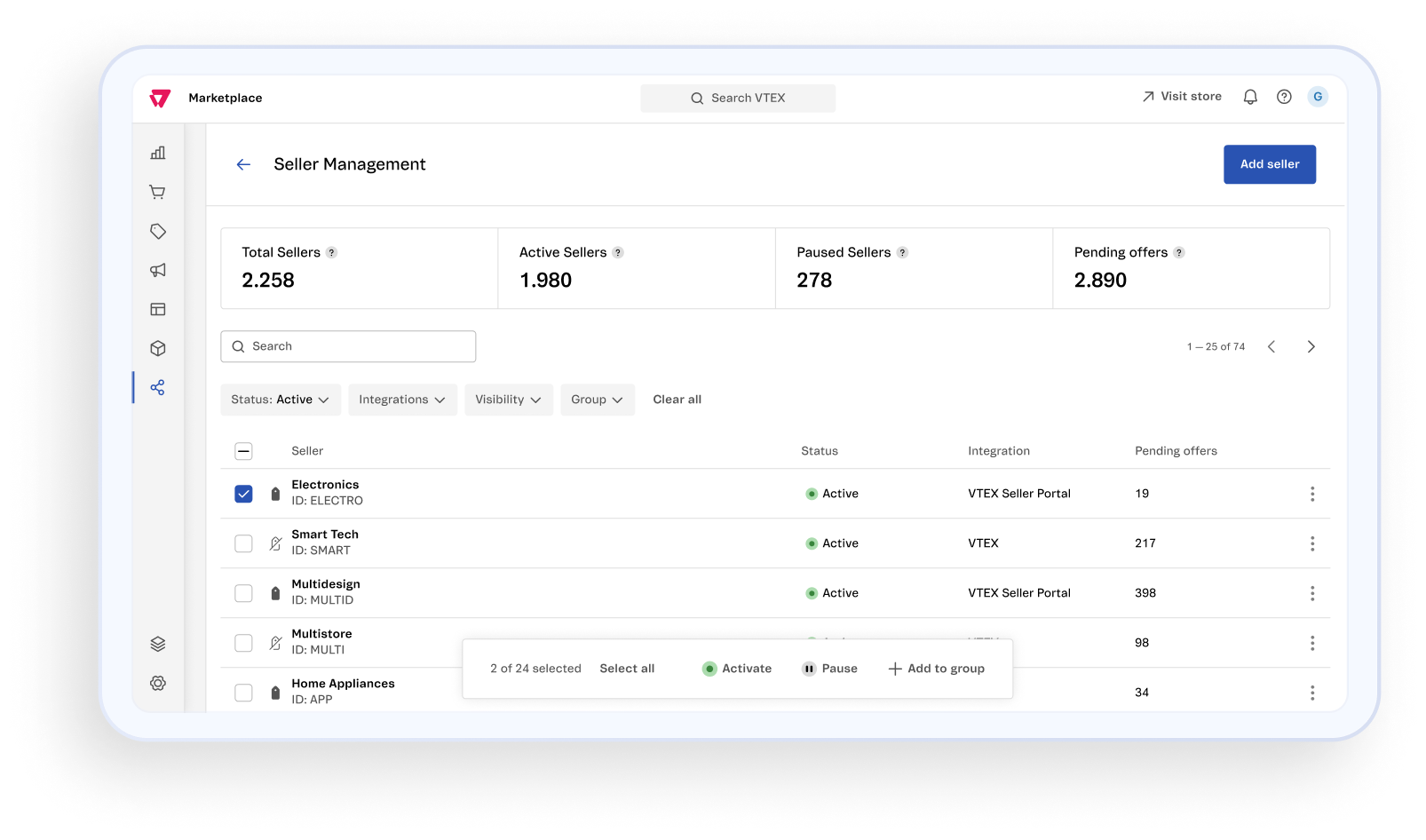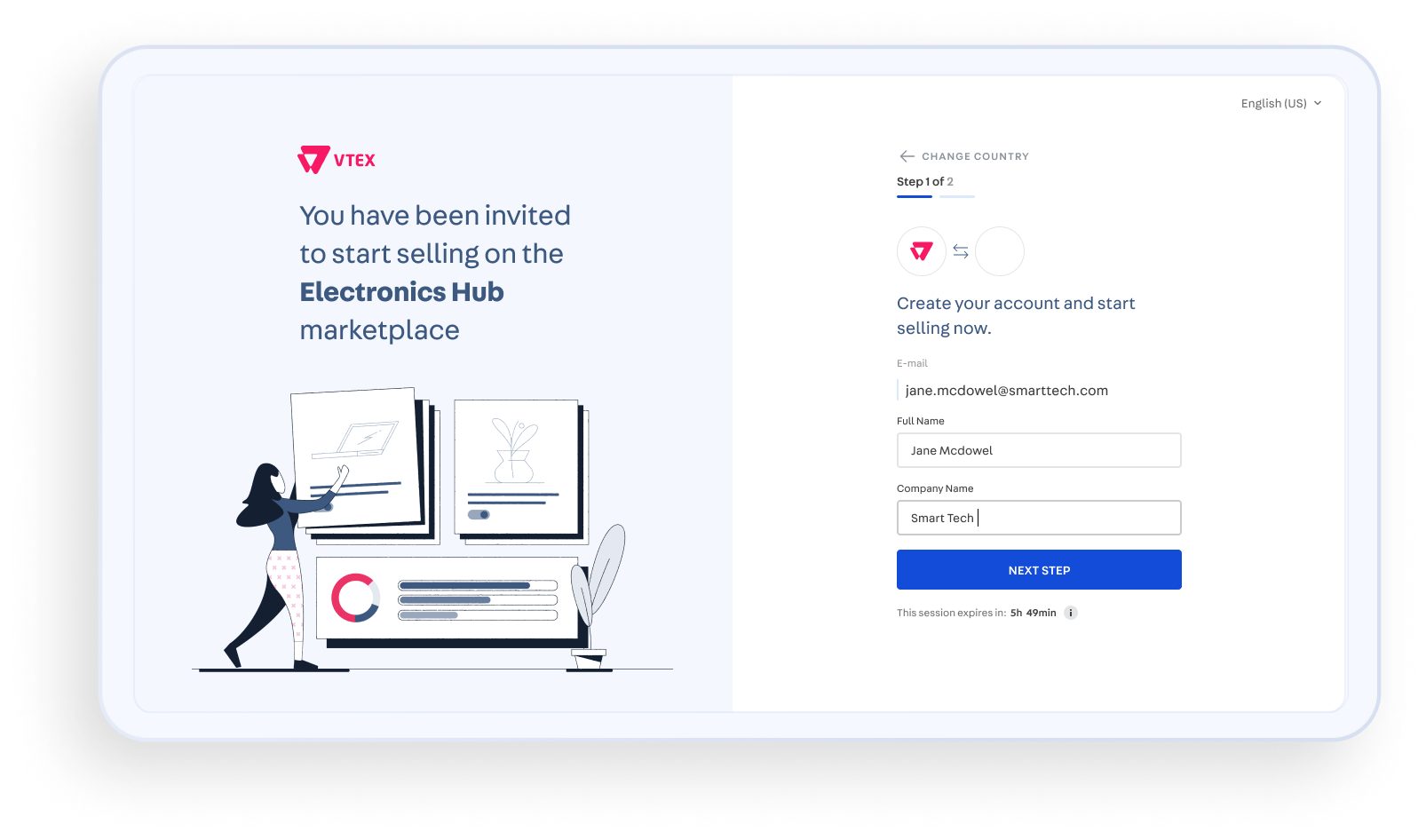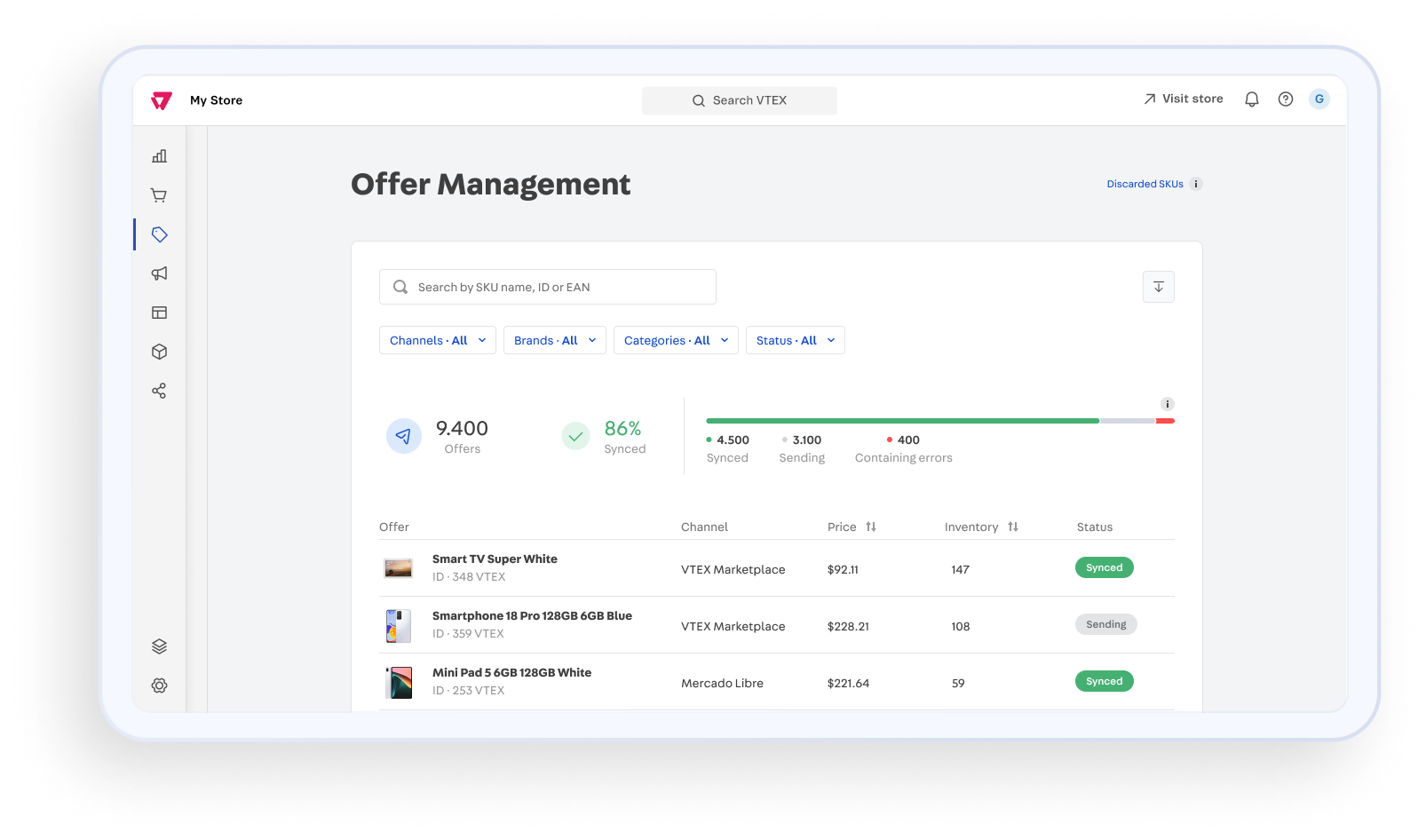
For more than 10 years, marketplace capabilities have been a pillar of the VTEX Digital Commerce Platform. The ease with which our platform allows brands and retailers to extend their product assortment and reach in a cost-effective way has been lauded by hundreds of companies across industries such as retail, grocery, consumer goods, and fashion.
At VTEX, we know that shoppers demand convenience and choice, evidenced by marketplaces representing over 67% of online sales in 2021. At the same time, 37% of retailers state their ecommerce business doesn’t meet profitability goals, highlighting the need to control cost and streamline operations.
With today’s economic uncertainty, we know that the low-risk and high-reward approach of a marketplace business is a sought-after growth strategy for ecommerce sellers that want new ways to grow revenue and maximize profitability. That’s why we are so excited to present the 2022 VTEX Marketplace Release.
This release includes enhancements to our marketplace module that will help brands and retailers better manage multiple third-party sellers, and onboard new ones, as well as enable their sellers to more easily manage their product and offers on the marketplace. These new capabilities include:
Seller Management
A great marketplace starts with its sellers, so it’s no surprise that one of the most important elements of a marketplace platform is the management and visibility of multiple sellers in a transparent, efficient; and scalable manner. This is VTEX’s main objective with the redesigned Seller Management experience.
With the revamped Seller Management tool, marketplace operators are able to create groups of sellers and filter and search for sellers based on their type, group or status. It also allows them to pause or activate sellers in bulk, quickly add and edit sellers and more easily track pending offers for each seller.
The new Seller Management experience displays analytics that gives brands and retailers visibility to their marketplace operation with the ability to track total sellers, active sellers and pending offers and also monitor the performance of individual sellers.

Seller Portal
When adding sellers to their marketplace, brands and retailers may encounter potential partners that don’t yet have an ecommerce business. To scale their marketplace operation successfully, operators must be ready to onboard new sellers with all levels of ecommerce maturity. That’s where Seller Portal comes in.
With it, marketplace operators can rapidly invite, onboard and integrate sellers to their marketplace by sharing pre-existing catalogs and sending email invitations in bulk. Beyond that, the marketplace operator can build custom experiences for all sellers or select groups of sellers by extending Seller Portal to their needs.
Using the Seller Portal, as well as a WMS that we integrated via API, we managed to onboard the first five sellers in less than two months. Thanks to the marketplace strategy, we were able to expand our catalog by 300% and have a more competitive price. We were thus able to increase our sales by 240% in 2021.
Jacobo Sutton, Co-founder and Director at doto.com.mx
The seller, on the other hand, can manage their connection to the marketplace, activate and sell products on the marketplace, manage shared products already in the catalog and update inventory and product prices. Additionally, Seller Portal will help sellers manage marketplace orders, process payments and even build a shipping strategy that can include several delivery options and pickup points.

Offer Management
From the shopper’s point of view, the most important part of a marketplace is the products that it sells, giving them choice and one-stop-shop convenience. Because of this, the easier brands and retailers make it for sellers to manage their offers, the happier their consumers will be. The new Offer Management tool was built with this in mind.
With Offer Management sellers can track the sending and synchronization of offers across their VTEX marketplaces, as well as some external marketplaces, all on their own.
Sellers have complete transparency of their offer information, such as sales channel, price, inventory and status of their offer. This allows them to quickly identify and fix catalog synchronization errors, search offers according to specific filters and deep dive into the interaction history of each offer.

Delivering the best possible experience
Given the current economic climate, profitability is becoming even more of a priority for retailers, and marketplaces have risen as one of the best ecommerce models to improve profitability.
In a September 2022 report from Gartner, 3 Emerging Trends in Marketplace Operation Applications to Counteract Inflation [login required], Gartner states “Digital commerce enterprise marketplaces can increase organizations’ resilience as they face pressures such as inflation and potential recession.” and went on to recommend that “Application leaders should leverage the latest trends in marketplace operation applications to drive growth while containing costs.”
At VTEX, we are committed to investing in and delivering the capabilities brands and retailers need to evolve and grow their ecommerce business in a profitable way.
Contact us today to learn how a marketplace business can help you grow revenue and improve profitability without the cost and risk associated with traditional ecommerce.
















